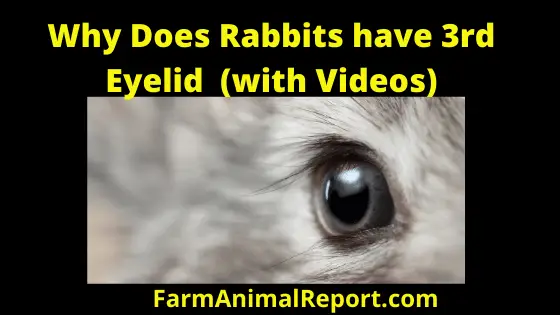As general rule rabbits have a third eyelid. They can close this transparent eyelid and it appears that their eyes are still open. The nictating membrane allows rabbits to be able to see even when they are asleep. This is because it is transparent; when the nictating membrane is in place, rabbits are allowed to see limitedly and pick up on movement, etc. At the same time, the nictating membrane releases fluid to keep rabbit eyes hydrated. This way, when they wake, their vision will not be slowed from sleep. They can quickly spot the danger and flee.
Do Rabbits Have Third Eyelid?
Why Rabbits have a Third Eyelid. Rabbits blink their eyes only 10-12 times per hour. This is so that they can keep their eyes peeled for predators at all times. After all, rabbits are the food source of choice for countless carnivorous animals, including wolves, foxes, hawks, and even humans. This means that they must be masters of escape if they are to survive. The third eyelid that rabbits possess the nictating membrane, exists for this purpose. To stay one step ahead of predators, rabbits must first be able to see them coming. Do Rabbits Have Third Eyelid?
Check Out Amazon for Resources about Breeding Rabbits
Why Rabbits have a Third Eyelid / Rabbits can See When They are Asleep
The nictating membrane allows rabbits to be able to see even when they are asleep. This is because it is transparent; when the nictating membrane is in place, rabbits are allowed to see limitedly and pick up on movement, etc. At the same time, the nictating membrane releases fluid to keep rabbit eyes hydrated. This way, when they wake, their vision will not be slowed from sleep. They can quickly spot the danger and flee. Do Rabbits Have Eyelids?
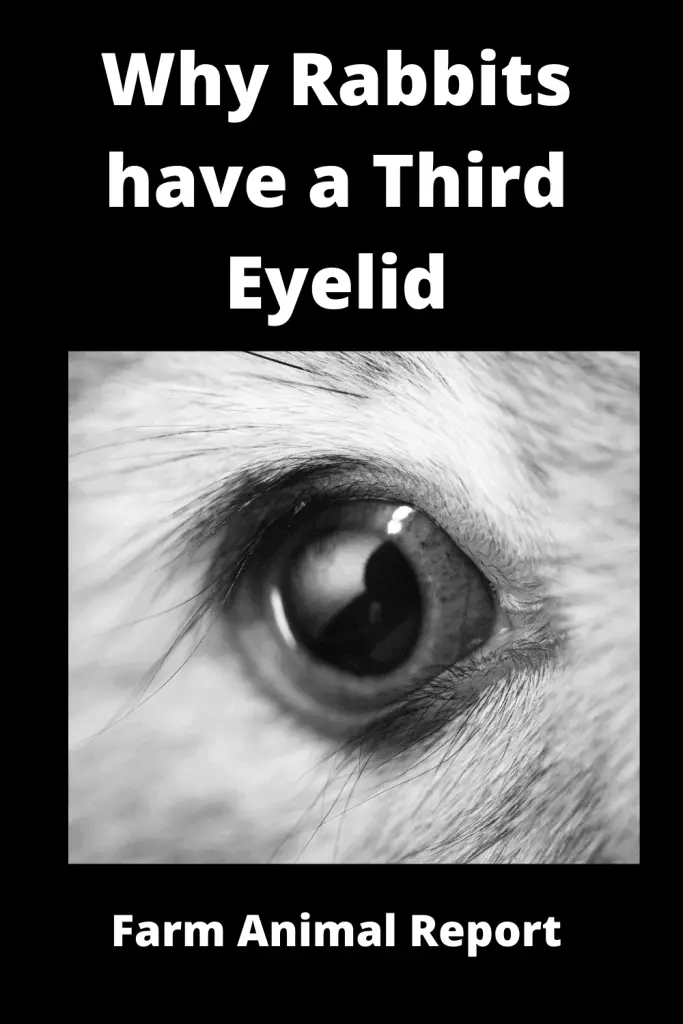
Rabbits Sleep With Their Eyes Open
You can see why the health of the nictating membrane is of such importance. They rely on it to sleep properly, and to protect themselves, night, day, dawn or dusk. The nictitating membranes may blink over the eyes of the rabbit. This allows the rabbit to sleep with their eyes open. As the rabbit sleeps with their eyes open, the nictitating membrane will blink over the rabbit’s eyes, moistening them as they sleep.
You can also Read our Guide –18 Ways to Make Money by Rabbit Farming—Extensive Guidelines for Rabbit Farmers
Third Eyelid Keeps Rabbits Eyes Clean
The third eyelid also helps keep the rabbit’s eyes clean. In the wild, a rabbit needs to have the clearest vision possible in order to watch for predators. The nictitating membrane will blink over the rabbit’s eye, which cleans it to provide the best vision possible. A rabbit does not need to blink their other eyelids as often, as their third eyelid will blink over their eyes keeping them moist and clean.
A rabbit will blink on average 10-12 times per day.
Structure of the Rabbit’s Eye
Rabbits Have Very Distinct Eye Positions. Their Eyes Are Located on the Upper Sides of Their Head. Rabbit eyes are located laterally, which means on the sides of their heads. Due in large part to this, rabbits can indeed see in 360 degrees. The exception is a small blind spot directly in front of them; if a predator has reached this point, the rabbit is unlikely to escape anyway.
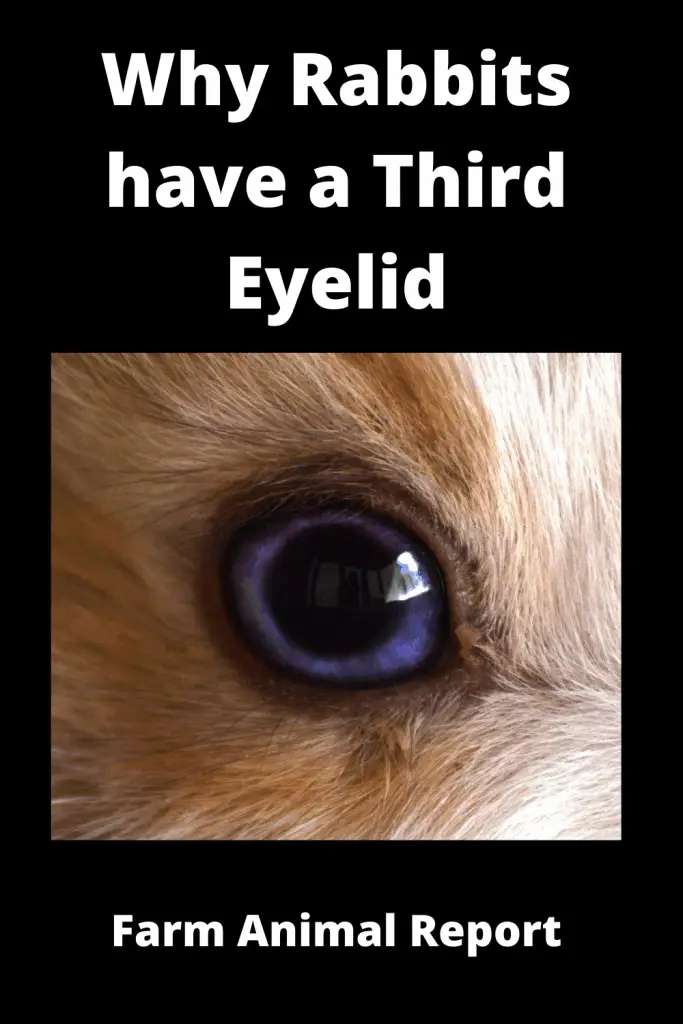
While rabbits do possess 360 vision, their vision is not in fact infallible. Rabbits cannot see well at all during night or day, for example
. Additionally, while they do have a great visual range, they do not see in the best of detail. To gauge a threat, all a rabbit really needs to know is its size and proximity. Their lateral eyes serve this purpose effectively.Rabbit Cornea is 30% of Whole Eye
Not only can rabbits see in 360, but their eyes corneas also take up a whole 30% of their eyes. A lot of physicality and energy are put toward the eyesight of a bunny.
This sense comes first, followed by hearing and smell closely. This allows rabbits to detect their predators quickly, so they can make their escape in time. The ocular muscles which are used to enhance focus are not considered very well-developed in rabbits.
Rabbits use these Senses for Protection
- Sight – 1st
- Smell -2nd
- Hearing – 3rd
While you may assume your pet sees the same way that you do, they are actually crepuscular animals, which means their eyes can see the best in half-light conditions. Half-light conditions are prominent around dawn and dusk, which is when you will typically see rabbits out and about. Rabbits are able to distinguish between blue and green, which is helpful as rabbits are frequently hunted by birds.
Rabbits have a hard time seeing the color red
. This is a type of color-blindness in rabbits known as being protanopic. The cornea of a rabbit is very large, taking up around 30% of their eye.If you pull down the lower corner of the rabbit’s eye, you will be able to see the single nasolacrimal punctum, which is responsible for draining the tears from the eyes from the conjunctiva, into the tortuous nasolacrimal duct into the nose.
Rabbits Night Vision in the Dark
Actually, rabbits see the best during dawn and dusk. As a result, these are the times that they are the most active. Animals most active during dawn and dusk are known as crepuscular.
Rabbits sleep during the night, and during the day. They prefer to be out and about during times of dim lighting. Sometimes, when it is overcast, they are more active.
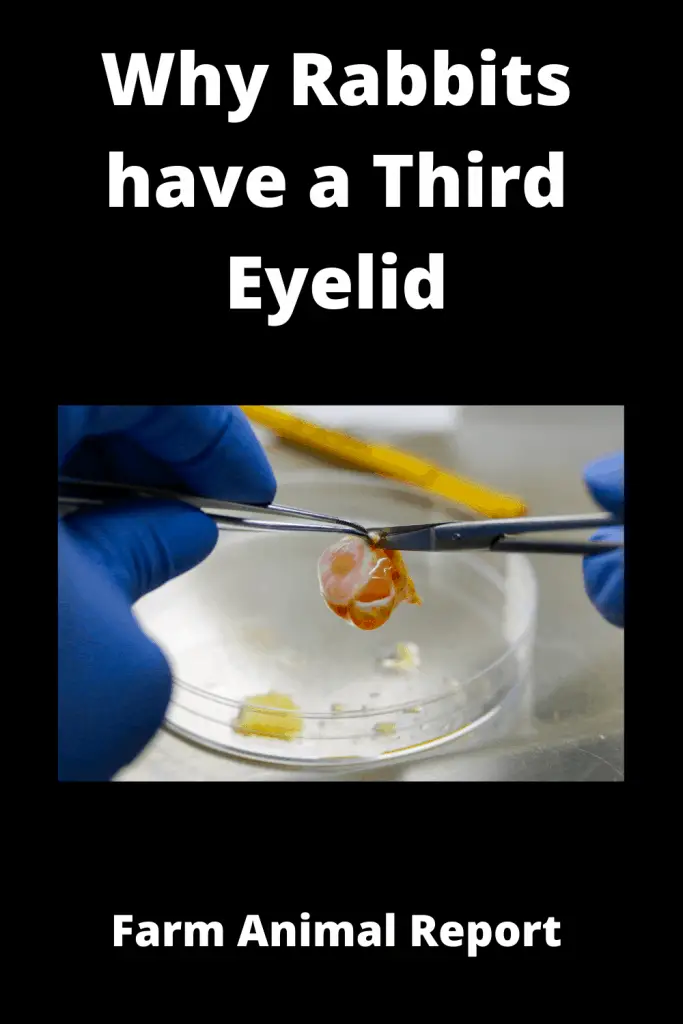
The eyesight of rabbits is truly excellent in terms of range. In terms of detail, though, it leaves something to be desired. Their vision does what it is meant to do; alerts them to threats, with enough warning for them to get away. The downfall of this far-ranging sight is that rabbits are more easily foiled up close.
A stalking cat, for example, might be able to move closer without too much trouble. In cases where the predator is already near, rabbits rely on their other senses heavily. It may come as no surprise that rabbit hearing is rather extraordinary. They can pick up on rustles, the flap of wings from above, and even breaths.
Lesser-known is their powerful sense of smell. Because rabbits are grazers, by nature they eat frequently. Their noses have adapted to be able to smell even through food. So, while they are tasting rich, green grass, they can still catch the separate odor of a predator nearby.
When it comes to eyesight range, bunnies blow many other animals away. When it comes to evading predators, this is a huge advantage.
How to Approach Your Bunny?
Because rabbits are prey animals, it is important you keep this in mind when you approach them. Even a pet bunny can be spooked rather easily. First and foremost, before you get close, make sure that your rabbit can see you clearly.
When interacting with a rabbit, move naturally (try not to move like a predator), and stay low to the ground otherwise. The wisest method is to let the rabbit come to you, usually. Let them smell your hand and make the first move.
Rabbits can see in color their vision is just limited. They can differentiate between the colors green and blue. This helps them pick out sky among the greenery, so they know to avoid hawks, eagles, and other threats from above.Rabbits are protanopic, however.
This means that they cannot see the color red. Once again, the color vision of rabbits is based on necessity. The far-range vision and basic color-distinguishing ability serve to help them perceive threats effectively.
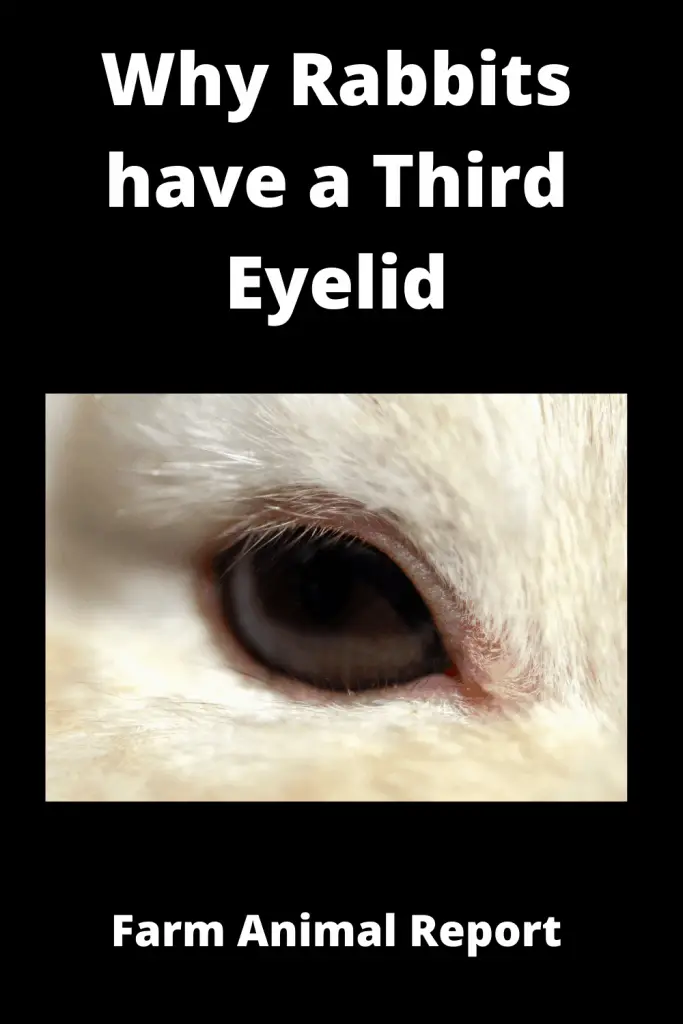
Medical Conditions in Rabbit Eyes
Rabbit eyes are so big and sensitive, it is no wonder that they are prone to some issues, whether condition or injury. Luckily all of these are treatable. The following are the most common eye conditions in rabbits, as well as what you can do to help your little friend heal.
First and foremost, rabbits can get debris in their eyes. This can be anything from grass to dust, to dirt… any sort of matter can irritate their eyes. A soft cloth dampened with water can serve to help you remove lesser debris. More serious blockages may require veterinary assistance.
Epiphora in Rabbits
Epiphora; is a condition that can affect the eye as a result of excessive tearing or inadequate drainage. Signs to watch for epiphora include:
- Milky, watery discharge
- Crusting of the facial hair near the corner of the eye
Excessive tear production may be a result of eye irritation. There are many environmental irritants that may be responsible for this
. A duct obstruction may be responsible for chronic rhinitis, or nasal infection. The obstruction may also cause inflammation or infection of the orbital glands, which is known as dacryocystitis. These obstructions are usually caused by some type of bacteria.
Duct Obstructions in Rabbits Eyes
Duct Obstructions; Sometimes rabbits develop nasal infections as a result of eye duct obstructions. The eyes and nasal passages are linked closely. The signs of nasal infection in rabbits are those of a classic cold; discharge, sneezing, and the like. This, too, requires treatment from a vet. You can help your bun in the meantime using a rag to clean the outside of their nose. This may aid them in breathing more easily.
What is Nictitans Prolaps in Rabbits
Nictitans Prolapse in the Rabbit; In rabbits, the third eyelid may be protruding due to orbital venous congestion or backpressure. This is a bilateral condition which may be an indication of mediastinal masses (thymomas) or a cardiac disease.
Hyperplasia or cellular infiltration of the Harderian gland may also cause nictitans prolapse which is usually unilateral. Excision of the Harderian gland is curative in those cases.
Nictitans Prolaps
Nictitans Prolaps; A condition that rabbits can develop is conjunctivitis, more commonly known as pinkeye. As with humans, this involves the inflammation, discharge, and discomfort of the eye.
Pink-eye requires treatment with antibiotic eye drops, and often oral treatment as well. This will require a prescription from a vet, most likely. Be sure to get your rabbit care for pinkeye quickly, as it tends to worsen otherwise.
Additionally, quarantine your bunny from other pets until it has made a recovery. Pink-eye is very contagious. Be sure to wash your hands after handling your sick bunny.
Eye Trauma and Cysts in Rabbits
Eye Trauma and Cysts; Eye trauma and cysts are also a possibility. Avoid these by keeping your rabbit safe from pets and other potential danger sources. Sometimes rabbits manage to scratch an eye anyway; in this case, the eye may heal on its own, or they may require veterinary assistance. Watch the situation closely.
Cherry Eye in Rabbits
Another unfortunate condition to which rabbits are prone is called cherry-eye. This is a prolapsed gland in the third eyelid. The result is a swollen, reddish eye. While cherry-eye sometimes resolves itself, it is advised to seek veterinary help swiftly.
Just like any other organ in the body, a rabbit’s eyes are able to experience disease, infection, or inflammation. Knowing which signs to look out for is Important for the health of your pet.
A thorough examination of the eye Should be carried out at each Veterinarian check-up. Along with having a regular examination of the eye, dental health should be checked in relation to the eye. The roots of the teeth, eyes, and nasolacrimal canal all have such a close relationship that the system should be checked for healthy function.
Rabbit Breeder Associations
| Rabbit Association | Location | Link |
|---|---|---|
| American Breeders Association | United States | ARBA |
| House Rabbit Society | California | HRS |
| Ohio States Rabbit Breeders Association | Ohio | OSRBA |
| Livestock Conservancy | North Carolina | LC |
| Rabbit Welfare Association and Fund | United Kingdom | RWA |
| British Rabbit Council | United Kingdom | BRC |
| European Association of Rabbits.... | Europe | EAP |
| Australian National Rabbit Council | Australia | ANRC |
| Australian Rabbit House Society | Australia | ARHS |
| ARBA - Rabbit Shows | United States | ARBA - Shows |


